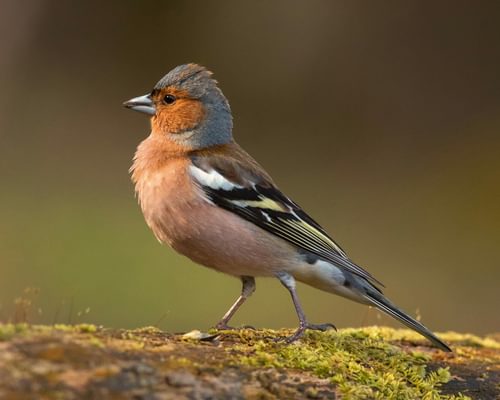While the male chaffinch gets called 'unmistakeably handsome', the female chaffinch is left wondering what on earth she did so wrong.
The female chaffinch may not be as pretty as the male, but she still has an important role to play. And so this article is all about the female chaffinch, what they look like and what behavioural differences separate them from the males.
How can you tell if a chaffinch is male or female?
The easiest way to tell if a chaffinch is male or female is by its colourings. The female is a green, brown colour with dark streaks running down their tails and wings.
The markings of the female and the male are very similar. In that, they both have streaks of white, yellow and black on their wings and tail. Both also have orange eyerings. However, the female's eyerings don't extend too far past her beak.
Where they differ is the overall colour scheme of their feathers. The female has brown feathers, the male has bright red, sometimes almost purple feathers.
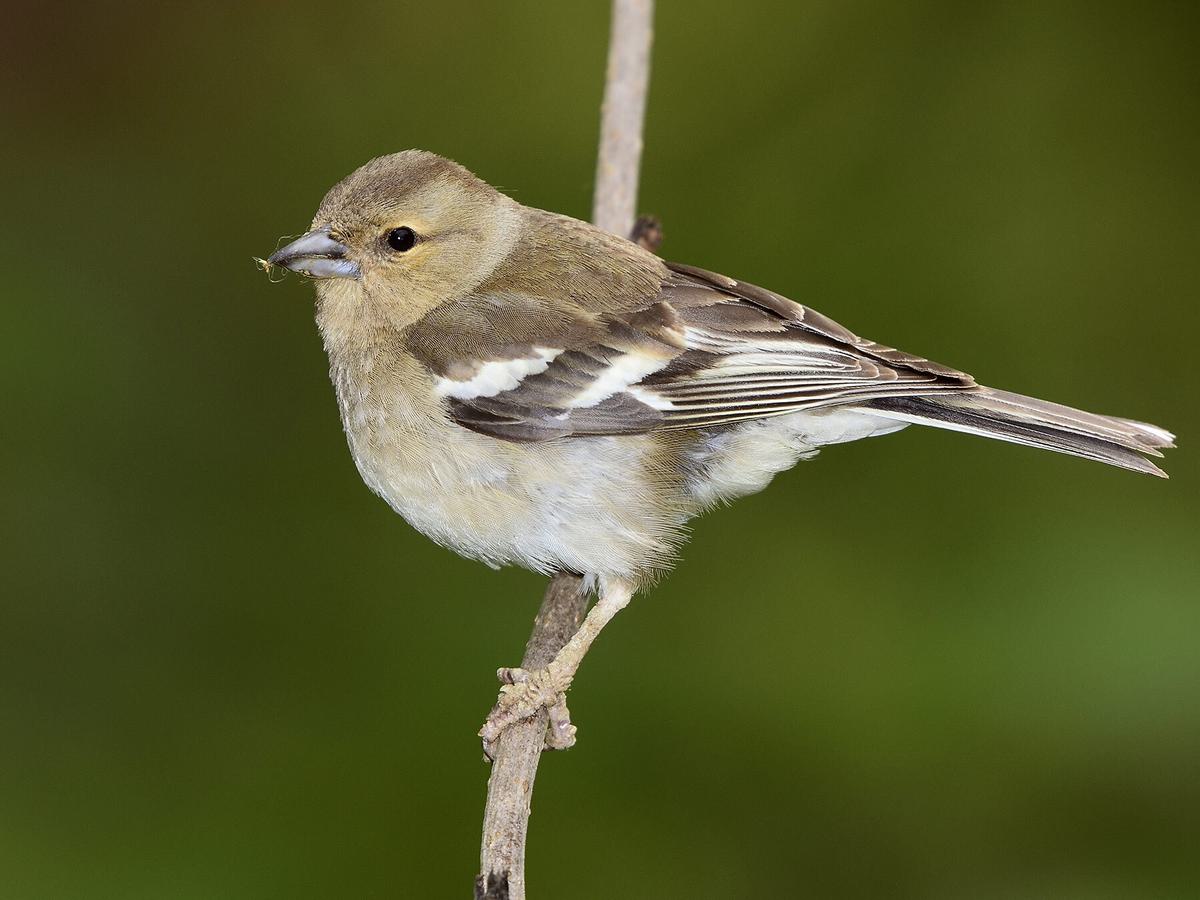
Female Chaffinch
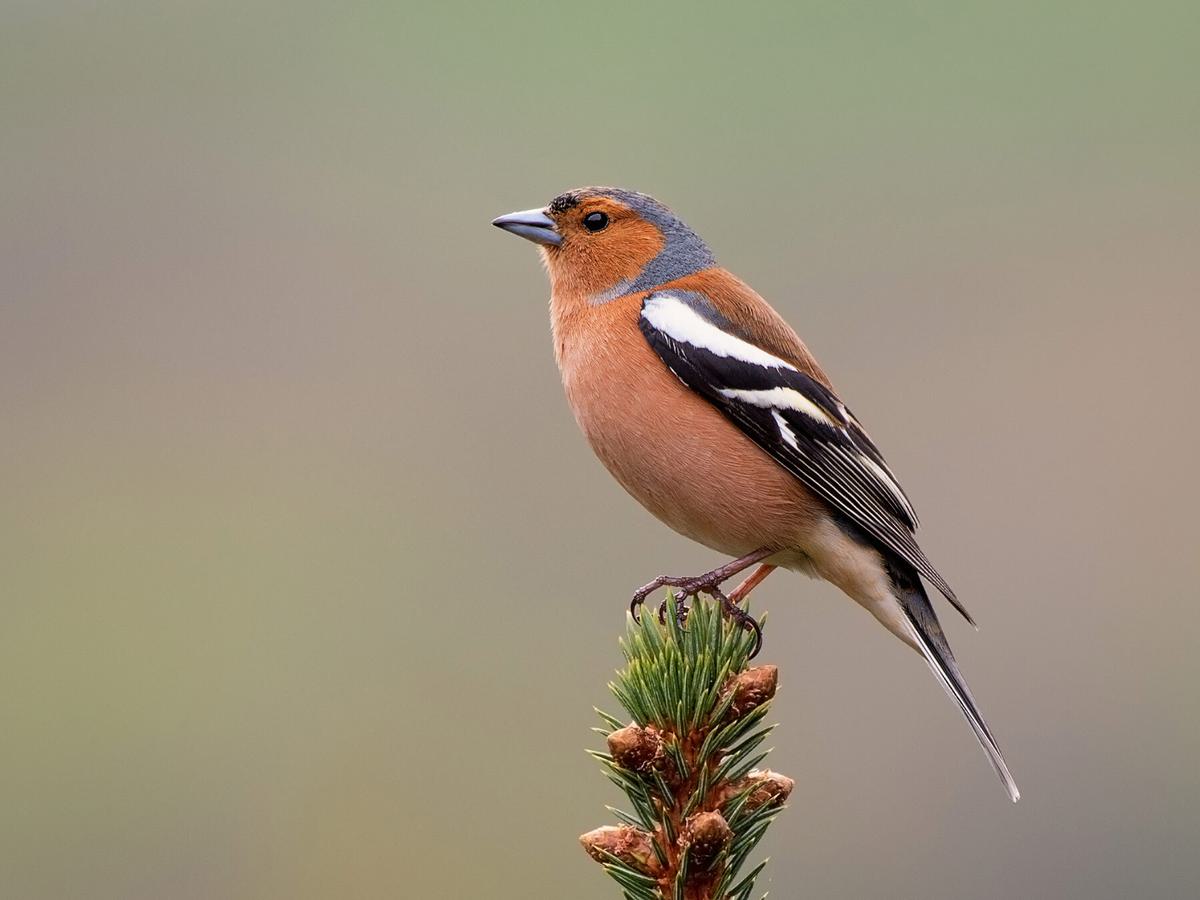
Male Chaffinch
What does a female chaffinch look like?
The female chaffinch is a beautiful bird. Her body is green on the back, head and wings, and they have greyish-brown underpants. Their tails are dark and have a centre strip of yellow running down them.
They also have orange eyerings, just like the male. However, the male's eyering makes up a large part of their face and sometimes continues on his chest. The female's eyering is usually only an inch or two in size and very rarely goes past her beak.
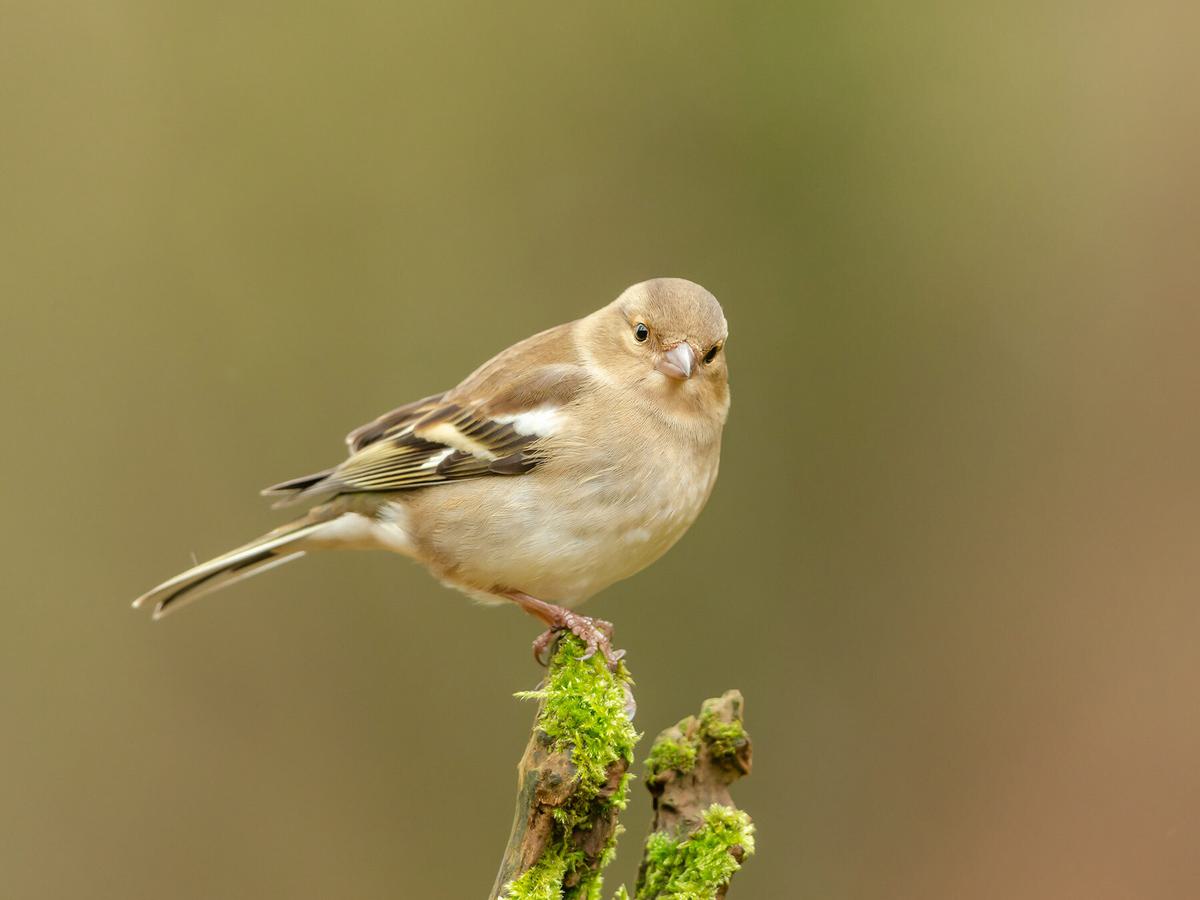
A female chaffinch (Fringilla coelebs), perched on a stump
Are female chaffinches bigger than males?
Female chaffinches are a similar size to males, but this can vary. You can see female chaffinches that are smaller than their partners and bigger than their partners. On average, though, female chaffinches are about the same size as males.

A male (left) and female (right) chaffinch feeding on seeds
Behaviour differences
One of the biggest behavioural differences between female and male chaffinches is that the female builds the nest alone. This is a really hard task. But female chaffinches do such a good job at building their nests that they can even be moved around safely.
Chaffinches like to nest low to the ground, and can often be found in small trees, hedges and shrubs. The female begins building the nest around April-May time, and it takes a week to complete. During this time, the female will take on average about 1,300 trips to find good material for the nest. They use twigs, grass, moss and feathers and then bound these with spider webs. It is an incredible nest, one of the strongest in the world.
Once the outside structure of the nest is complete, the female chaffinch will then line the cup with hair and feathers to protect the eggs. While the nest is incredibly strong, it is also light enough to be moved. Most female chaffinches will choose a nesting site that is perfectly safe and ready for when their chicks hatch. However, if needed, the nest can be moved without damaging the structure.
So, the biggest behavioural difference between female and male chaffinches is that the female is a master engineer of nest building, one of the best in the world.
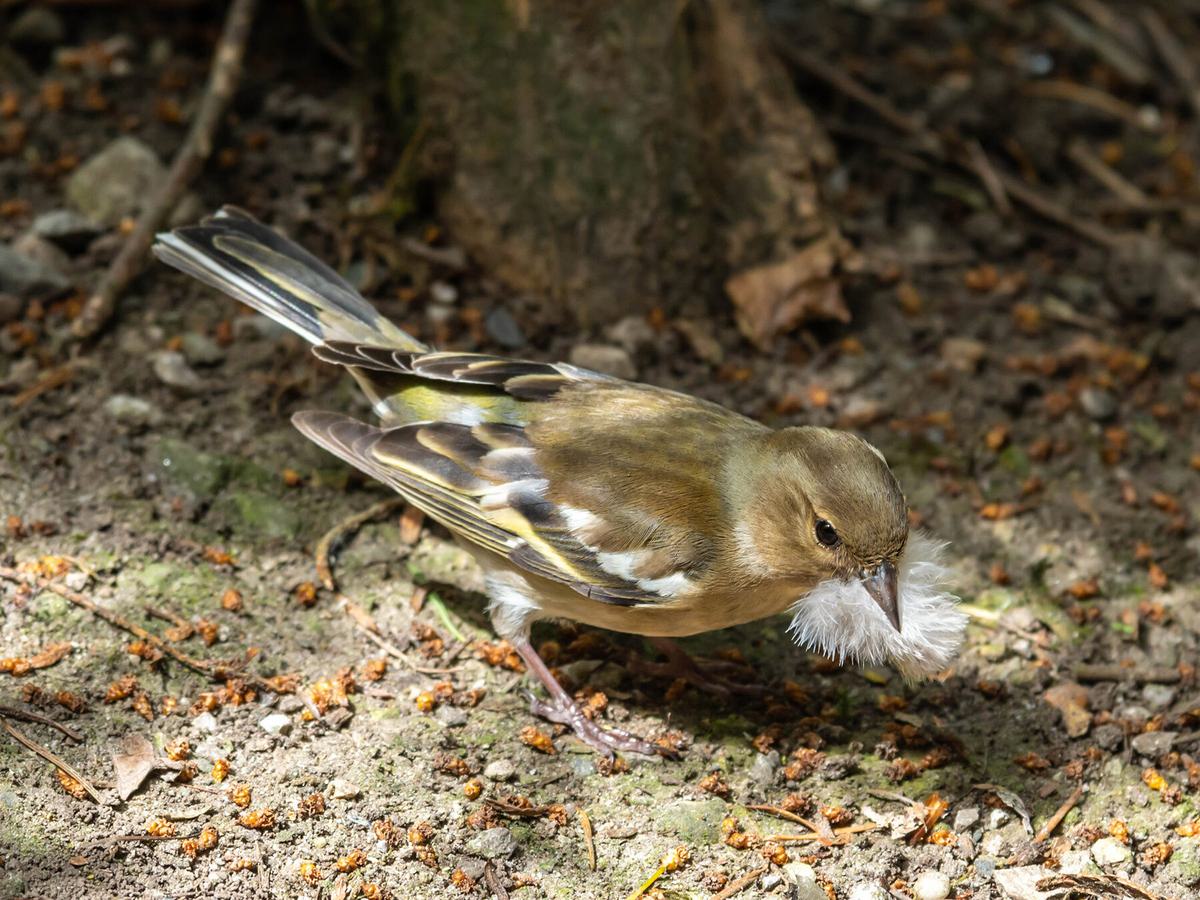
Female Chaffinch gathering nesting materials
Singing and calls
Female chaffinches do sing, but nothing compared to the males. The male chaffinch begins defending its breeding territory and finding a mate in early January, despite the nesting season starting in April. So, most of the year, when you hear a chaffinch singing and calling, it is the male.
For much of the year, the male chaffinch is very much in charge. That is until the breeding season. The females take over control in the nesting season to ensure it is successful. So, from April until late May, when you hear a chaffinch, there is a higher chance it is a female putting a male in its place.

A female chaffinch singing
Nesting and feeding
It is the female chaffinches' job to build the nest, and she does a fantastic job of this. Chaffinch nests are so strong that they can be moved without damage.
They make the nests out of pretty standard stuff like moss, grass, small twigs and feathers. However, once the structure is complete, they bind it together with spider webs to create a very strong structure.
Once the nest is complete, the female chaffinch will lay eggs and sit on them for about 15 days before they hatch. During this time, the male chaffinch will feed the female. After the chicks have hatched, it is both parents' responsibility to feed the chicks.
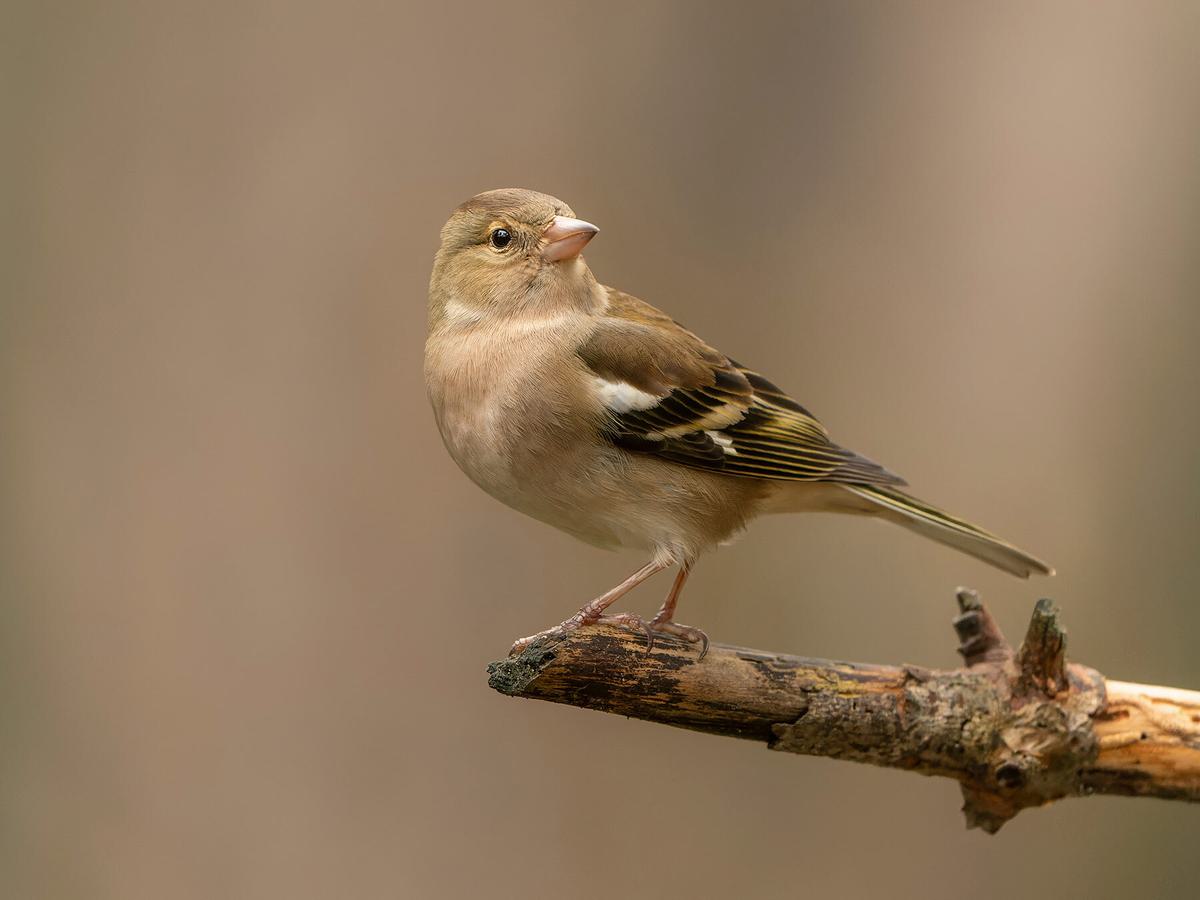
Female Chaffinch perched on the branch of a tree in the forest
Can female chaffinches raise young alone?
It would be difficult for a female chaffinch to raise young by herself if the male were to leave before the eggs had hatched.
Just before the female lays her eggs, she builds the nest. This is a week's worth of work, and she takes on average 1,300 trips to source all of the materials. She then lays her eggs, which is another huge zap of her energy. And she is now stuck in the nest keeping the eggs warm. During the incubation period (around 15 days), it is up to the male to feed her.
If the male were to leave at any point during these critical days, it is very unlikely that the female could survive. She expends loads energy during the first stages of the breeding season and relies on the male bringing her food. After this, the male also helps the female feed the young, and if the clutch is rather large, she may struggle to do it alone.
If the male were to leave once the eggs had hatched, the female might be able to raise the young by herself, depending on the size of the clutch. She would need to find enough food for herself and the chicks, so it would be challenging but not impossible.

